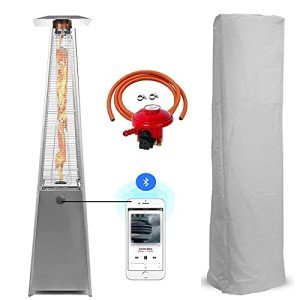Technology Is Making Buy Gas Radiant Heaters Better Or Worse?
Buying Gas Radiant Heaters: A Comprehensive Guide
Gas radiant heaters have actually gotten appeal in the last few years for their effectiveness and capability to supply instantaneous warmth. As more homeowners and companies try to find ways to keep their areas comfy, comprehending the functions, advantages, and factors to consider when buying these heating units can be really useful. This article delves into the complexities of gas radiant heaters, helping possible buyers in making informed choices.
What are Gas Radiant Heaters?
Gas radiant heaters are devices that utilize propane or natural gas to give off heat straight into a room. Instead of heating the air, they warm things and people in their vicinity, offering convenience faster and effectively. These heaters are popular for both indoor and outdoor settings due to their flexibility and effectiveness.
Secret Features of Gas Radiant Heaters
- Direct Heating: Unlike traditional heaters that warm the air, gas radiant heaters offer direct warmth, making them an efficient option for quickly heating up spaces.
- Mobility: Many designs are available as portable units, allowing them to be quickly moved from one place to another.
- Fuel Variety: Gas radiant heaters can be powered by gas or propane, offering users versatility based on accessibility and choice.
- Adjustable Settings: Most gas radiant heaters come with adjustable heat settings, permitting users to tailor the level of warmth based on their needs.
Benefits of Gas Radiant Heaters
- Energy Efficiency: These heaters convert gas into heat efficiently, leading to lower utility bills compared to electric heaters.
- Quick Heating: Radiant heat is felt nearly instantly, making these heaters perfect for unexpected temperature drops.
- Low Maintenance: Gas radiant heaters normally need less maintenance than electric designs, making them a problem-free alternative.
- Environmentally Friendly: When powered by clean natural gas, these heaters can be a more ecologically sustainable choice compared to other heating techniques.
Kinds Of Gas Radiant Heaters
When it concerns choosing a gas radiant heater, it's important to understand the various types available. Below are the most common options:
- Indoor Gas Radiant Heaters: Designed for indoor spaces, these heaters are usually vented or unvented and frequently come with integrated security features.
- Outdoor Gas Radiant Heaters: Commonly utilized in patio areas or outdoor dining areas, these heaters are created to endure the elements.
- Wall-Mounted Gas Radiant Heaters: A space-saving alternative, these systems are ideal for smaller sized areas and can be equipped with different heat outputs depending on the area's needs.
- Freestanding Gas Radiant Heaters: These portable designs can be used in various places, ideal for those who require versatility.
Purchasing Guide: How to Choose the Right Gas Radiant Heater
When buying a gas radiant heater, several aspects need to be thought about to ensure you pick the right design for your space:
1. Heating Capacity
- Measured in BTUs (British Thermal Units), the heater's capacity determines how much location it can effectively warm. Buyers must evaluate their particular requirements based on space size.
Space Size (sq ft)
Recommended BTUs (for Gas Radiant Heaters)
100 – 200
5,000 – 10,000 BTUs
200 – 400
10,000 – 20,000 BTUs
400 – 600
20,000 – 30,000 BTUs
600 – 800
30,000+ BTUs
2. Type of Gas
- Think about whether you will be using propane or natural gas, as different heaters accommodate different fuel types.
3. Safety Features
- Look for models geared up with safety functions such as automatic shut-off valves, tip-over defense, and oxygen exhaustion sensing units.
4. Setup Requirements
- Some heaters might need professional installation, specifically vented models. Be sure to think about the costs and requirements associated with installation.
5. Mobility
- If flexibility is vital, think about portable models that can be easily moved from one area to another.
Installation and Maintenance
Gas radiant heaters are normally simple to install, especially portable models. Nevertheless, vented options might require expert setup to ensure they satisfy regional safety codes.
Maintenance typically involves:
- Regular cleaning to avoid dust accumulation.
- Checking gas connections and fittings for leakages.
- Guaranteeing security functions are functional.
Suggestion: Regular checks around the system can help extend its lifespan and preserve security.
Often Asked Questions (FAQs)
Q1: Are gas radiant heaters safe for indoor use?A1: Yes
, as long as they are correctly vented and equipped with needed safety features, they can be safely used indoors.
**Q2: Can gas radiant heaters be utilized in enclosed spaces?A2: Unvented gas heaters can pose dangers in enclosed spaces due to possible suffocation or carbon monoxide buildup. Constantly make sure enough ventilation. Q3: How do I understand what size heater I need?A3: The appropriate size depends upon the location you intend to heat. Describe the BTU chart
above to determine your requirements. Q4: What is the difference in between propane and natural gas heaters?A4: The main distinction depends on their energy source
**; propane is provided through tanks, while gas is normally piped into homes. Q5: How can I make the most of efficiency?A5: Ensure the heater is properly sized for your space, keep it routinely, and think about using it in combination
**with other heating approaches for optimum convenience. click through the next page can be a terrific addition to any home or company, providing energy-efficient and fast heating solutions. By comprehending the various types, functions, and considerations
when purchasing, buyers can make educated choices that fulfill their heating requires. With the ideal choice, these heaters supply comfort, dependability, and a welcoming environment during cooler seasons.  ******
******